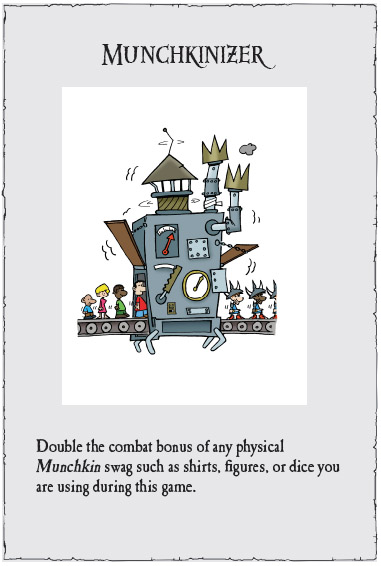FROM CANDY LAND
TO MUNCHKIN
THE EVOLUTION OF A YOUNG GAMER
Dave Banks
Like most fathers, I was overjoyed when my kids were born. My happiness might have been more than others’, not because I loved my kids more than other dads did, but because I had more of a reason to be thrilled. By twist of fate and embryonic cell division, I am father to triplets: identical girls and a boy.
It’s been an interesting road and probably not all that different from the one that other families travel; we just go through things all at once and in a big way. Like braces and puberty and diapers. We went through a lot of diapers.
To be honest, the first couple of years were pretty boring. Sure, the many late-night feedings were an amusement park’s worth of fun, and three tykes crawling (and then walking) in three different directions certainly kept us busy, but I couldn’t wait for my kids to get old enough to really interact with us and, more importantly, play games with me.
I have the somewhat unfortunate situation of being a gamer married to a non-gamer. I’m not complaining. My wife will occasionally sit down for Scrabble or backgammon or one of “my games,” like Agricola or 7 Wonders, but given the choice, she’d rather read or do something else. So I was excited that I had three potential additions to family game night in development.
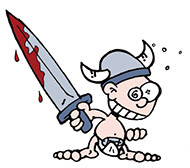
As my kids grew older, I eased them into gaming with traditional fare. We played the staples – Candy Land and Trouble and the like – as many times as I could bear before getting bored and frustrated. I also peppered our sessions with nontraditional designs for younger players, such as The Magic Labyrinth and Gulo Gulo. Unfortunately, no matter what I tried, my daughters just weren’t that interested. I could draw them in once in a while, but they seemed to take after their mother. That was okay. I’d rather have an occasional player than someone completely shut off to gaming.
The silver lining was that my son loved games. I mean he really loved them. As soon as I would get home from work, he’d want to play. This was fantastic; how could I ever say no? Granted, I’m sure some of it was him just wanting to hang out with Dad, but I was happy to be sharing my interest in gaming with him.
It was really interesting to watch how he played games early on. While we might use the rules as written, he would always want to continue interacting with the game afterward, but without the rules. A session of Candy Land devolved into a battlefield with the blue and green tokens forming a coalition to fight red and yellow. Cards were propped up against each other to form bunkers and artillery guns. The same was true of other games. Without his ever having seen it played, he made Monopoly a racetrack and Munchkin another battlefield, its tokens far more warlike than the smiling children of Candy Land. While he was too young to play, the colorful pawns faced off in armies. Rolling the die to the Munchkin face meant certain death for the enemy.
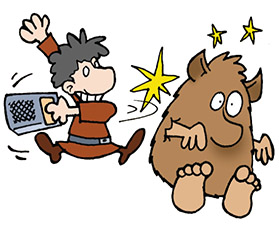
Designs aimed at kids his age were important for him developmentally. He needed to learn how to win or lose gracefully and to be patient when it wasn’t his turn. There were also cognitive skills, such as pattern recognition, that he needed to master. But the one thing that truly revealed itself during all these early experiences was imagination – creativity in finding ways to try to win and, during free play after the “real” game was done, in how he used the components. His experience was unique compared to his sisters’, who would play a game as quickly as possible, only to move on and have similar experiences through drawing or interacting with other toys. In a sense, they were already roleplaying, but while my daughters reached for crayons or American Girl dolls, my son tested out new roles and acted out his feelings with game pieces. When the red Munchkin had finished his race to level 10, he was ready for an all-new battle, one that involved chainsaw sounds, screams, and bloody victory.
As my son grew, we tried new and different titles. Now, I admit that I was always pushing the boundaries of what he might be ready for, but even with that in mind, it was a frustrating search. I love the idea of the ubiquitous international symbols on the corner of almost all game boxes these days – the ones denoting how many players the design is best suited for, how long an average session will take, and the recommended ages. Unfortunately, with the exception of the number of players, I’ve found that the information is quite often wrong. I’ve played some games that take twice as much time as is listed on the box and others that are over in a fraction of the projected time. That’s fine. Maybe we socialized more than usual for those marathons or missed a rule that significantly shortened the games that ended too soon. No real complaints there. But the your-mileage-may-vary quality of the labels meant it was a challenge to find titles that were appropriate.
My reasoning for some purchases was undoubtedly flawed because of an assumption that a game intended for ages 10 and up had to be okay for my intelligent and engaged seven-year-old. Seems logical, right? In many cases, it was true. He “played up” on some titles aimed at slightly older kids and did quite well. With others, the age recommendation held firm; I could see his mind wander, or I recognized that he was pretending to understand when I knew he didn’t. Those failed experiments were relegated to the closet for future use. For a lot of games, though, the suggested age ranges proved unreliable. Some are rated for older kids based on content, while others have mechanics that are more difficult for kids to grasp. The only reliable method for determining appropriateness for my son was to just sit down and try the game out.
Which we did, as often as possible.
Sometimes we would play for half an afternoon, jumping from box to box, table to floor and back again. Other times, we would just concentrate on having fun and enjoying each other’s company. I’ll admit that there were quite a few weekend afternoons when we spent more time just having make-believe battles with Heroscape tiles and figures than ever actually playing the game.
In my quest for new possibilities, I scouted the aisles of my friendly local hobby store, looking for titles that we might be able to enjoy. More often than not, I could only see the limitations. I was left to dream of playing all-weekend wargames with him or, flipping through a stack of Dungeons & Dragons modules, to long for the day when we could experience RPGs together. I knew Wizards of the Coast recommends players get started with D&D around age 12. I was close to pulling the trigger and giving it a go, but I wasn’t sure our boy was quite ready to sit at a table and focus on a single encounter for an hour or more.
Then inspiration struck and I realized that, perhaps, it was time to introduce him to a “real” game of Munchkin.
I talked my wife into being our third and she, my eight-year-old son, and I sat down to play. The rules were easy to teach him and, before long, we were building our characters and leveling up. We were killing the monsters and stealing the treasure, as the Munchkin box cover advertised, but we ran into some trouble with the whole “stabbing your buddy” part.
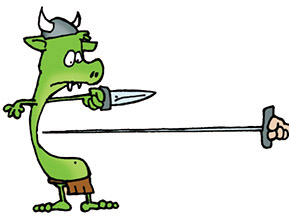
Trouble arose when my wife or I played cards against my son; he perceived it as a personal attack, not at all like the mock combats he’d staged with the Munchkin tokens or the Candy Land pawns. He didn’t understand why his mom and dad would work against him, to try to prevent him from winning. What’s more, if I assisted my wife in battle against a monster, this was another affront. We were obviously teaming up against him. It quickly became evident that it was time to take a break from Munchkin and try something else. We played a cooperative boardgame and waited for things to cool down.
After a while, I had a conversation with my son. He was upset because he thought we were hurting him on purpose. The mechanic of working against your competitors was new to him and the idea of his parents working against a kid while working together without him was simply too strange and confusing.
Sadly, Munchkin went back in the closet for a while.
Our first experience with Munchkin weighed heavily on me – while I knew it could be a lot of fun, my son didn’t. I still wanted to get him back on the Undead Horse (kicks, bites, and smells awful, lose two levels), in a manner of speaking. So I started thinking about the Munchkin experience and similar games and mechanics.
Since Munchkin is a dungeon crawl, I thought perhaps there were lessons to be learned from a traditional RPG. One Saturday afternoon, we sat down at the kitchen table. I asked him what he liked about games and what he didn’t like.
“I really like make-believing about fighting monsters,” he began.
So far, so good.
“And pretending to be a knight or a fighter on an adventure.”
Getting warmer.
“But I like it better when we’re on the same team and don’t hurt each other.”
Full reverse!
He was most of the way to being not just a Munchkin fan, but a full-on adventure gamer. However, I didn’t want to push him too far, too fast. I knew there was a solution, and I found it in my own childhood and a very special red box.
With a couple of his neighborhood friends, my son sat down with me to learn how to play Dungeons & Dragons. Over the course of quite a few weekends, we began a journey to discover just how much fun roleplaying games could be. In my son and the other boys, I saw my own 10-year-old self, paging through the AD&D Player’s Handbook in the basement of a friend’s house, slowly making sense of the arcane formulas and charts with rows of numbers. More importantly, I saw the excitement grow in each of them as they tentatively explored caves and dungeons. They challenged their imaginations as they considered all the possibilities that lay before them.
It was magical and it was gloriously fun. But I had another agenda. Besides just learning how to play an RPG, I also wanted to show my son how brutal these kinds of games could be. More than once during that adventure, his character, a cleric, was attacked mercilessly by kobolds, skeletons, and goblins. He came close to dying a couple of times, only to be rescued by his comrades – or, I have to admit, a suspiciously low dice roll by the DM.
In this cooperative environment, my son could explore the boundaries of RPGs, yet still feel somewhat protected by his allies. As the adventure continued, the kids reached out, trying to find the limits of what their characters could do. Not surprisingly, this included attacking each other – and, subsequently, discovering the repercussions of such an action. At first the self-destruction of the party was greeted with anger and disbelief.
“Can he do that?” asked one boy.
“Sure, why not?” I replied in my best mischievous-DM voice.
The table was silent as the kids worked out what had happened and how they might react.
“Can I hit him back?”
“Absolutely.”
The stage was set for a return to Munchkin.
We still finished the red box adventure and had a wonderful time doing it. It led to a lot of things: a D&D campaign that lasted nearly a year, a love for painting miniatures, and an interesting request the following week.
I was reading a book when my son came into the room. “Hey, Dad,” he started. “Do you think we could try playing that Munchkin game again?”
“Absolutely.”
Now that he was battle-tested, I thought the next crack at Munchkin was sure to be different – and was it ever. When we sat down to play, my wife and I planned to take it easy on him. He would certainly take it easy on us. My son, however, had other plans. He came out swinging, not necessarily all that interested in leveling up, but mostly intent on putting a little revenge smackdown on Mom and Dad for the earlier session.
He benefited from a seemingly never-ending draw of lucky cards to bolster the monsters we were battling. Our combat strength failed time and time again, and he cackled away, very pleased with himself. I smiled, partly at his joy, partly at the knowledge that the gamer training wheels – and the gloves – were coming off. The session eventually ended, although it certainly ran much longer than a typical game, and Munchkin found its way into our regular rotation.
But not just the core set. Of course not. We had to pick up expansions and variations like Munchkin Axe Cop and Munchkin Zombies. For a while, it seemed like we couldn’t visit our local game store without coming home with a foil pack of Munchkin cards.
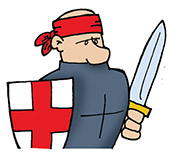
At first my son wanted to build the most serious, damaging character. He wanted a Warrior with a sword, a helmet, and a shield. But eventually the Bad-Ass Bandana (+3 bonus, usable by human only) won him over and seriousness gave way to silliness. He spent game after game trying to build the wackiest but still most powerful character he could, complete with Boots of Running Really Fast (+2 to Run Away) as a means of last resort. Many an evening or weekend was spent constructing these absurd and goofy characters, then banding together to kill Plutonium Dragons and Unspeakably Awful Indescribable Horrors or just throwing a spanner in someone else’s plans.
We’d mix and match the cards to create humongous door and treasure decks, and giggle at the unpredictable combinations that came about as a result of combining the many sequels and expansion packs. A Cleric with Decaying Flab, a Sunday Bonnet, and Stick to Human Boots? One of us probably played it at some point. Some of the most outrageous combinations have produced some of the finest results, and all the laughter coming from our Munchkin free-for-alls has actually made my daughters more interested in playing. They aren’t head over heels like my son, but I’ll take what I can get.
Unfortunately, more responsibilities for me have resulted in less and less play with my regular group. But I still find time for a weekly game with my son and one or two others. It’s interesting to note that, while my playing time has diminished a bit, his hasn’t. He’s become a bit of a Munchkin evangelist, spreading the word and turning his friends on to the game by explaining the rules and breaking open the box at every opportunity. It’s with a good deal of pride that I watch him gift Munchkin sets at nearly every birthday party he attends.
Some afternoons, my son will sit at the dining room table, sorting through the decks, trying to cobble together the most ridiculous or powerful character possible. It reminds me of our idle play with Heroscape, ignoring the rules and just getting lost in the components.
Ultimately, this is what gaming is about to me. Winning and losing doesn’t really matter; even after the worst defeat, I know that I still got to spend time playing with my family or friends. And as I watch my son rearranging cards by himself, using his imagination and just having fun, I appreciate games even more. It’s good to forget the rules for a while and just enjoy your own version. Eventually, though, the need for interaction – and competition – returns.
“Hey, girls,” my son calls out to his sisters, “want to play Munchkin?”
“Sure!” they yell back.
Smiling, I walk toward the table. I know there’s always room for one more. 
Dave Banks is married, has three kids and two dogs, and lives in Kansas City. By day, he is an advertising executive, promoting goods and services across the web and in trade magazines everywhere. By night, he writes for the GeekDad blog, covering everything from robotics to movies to games. Mr. Banks is also a nationally recognized speaker, talking about families and technology at conferences from coast to coast, including the Penny Arcade Expo and SXSW. His many interests include Formula One and Major League Soccer, but above all else, he is a born-again tabletop gamer, converting others to cardboard and living by the mantra, “Hey, even if you lost, you still got to play a game. And that’s a pretty good thing.” You can follow him on Twitter at @davebanks.
